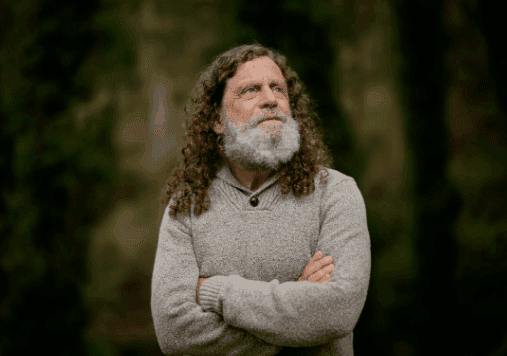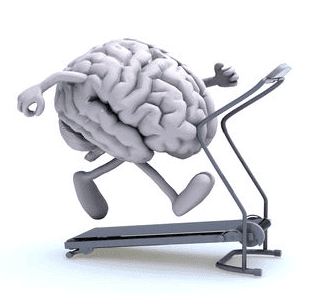Why did that behavior occur?

Dr. Robert Sapolsky grew up in Brownsville Brooklyn, New York. His educational background includes John Dewey High School, The Rockefeller University and Harvard University. Currently, Dr. Sapolsky is a professor of biology, neurology and neurological sciences at Stanford University in Palo Alto, CA. He is also a research associate at the National Museums of Kenya. Within the world of biology and stress physiology, it doesn't take long to come across his published research. In addition to his prominent presence in the research field, Dr. Sapolsky has also authored many books including A Primate's Memior, Why Zebras Don't Get Ulcers, and more recently Behave: Humans at Their Best and Worst.
I had the opportunity to see Dr. Sapolsky present in Costa Mesa, California on February 17th, 2020. The opportunity was initiated through work, as a I currently work in a biobehavioral science lab in San Diego, California. "Why did that behavior occur?" was the evening's topic of discussion. I felt a bit of deja vu when reflecting back on that journal entry nearly one year ago. Between then and now, I had read much of Dr. Sapolsky's work as well as his book Why Zebras Don't Get Ulcers. I was coming very interested and moderately prepared....enough to keep up, yet still desiring additional insight.
The following is a brief breakdown of Dr. Sapolsky's presentation. This article focuses on this experience only, with little references to his additional work. I also offer resources for those who are looking to implement the knowledge offered by Dr. Sapolsky, references to his published work, and future directions for Part II.
"Be VERY careful how you judge behavior, most likely we're missing a LOT of context.... from the split second before to billions of years of evolution before"
(3) Predisposition
Biologically/Culturally/Environmentally
The power of culture, environment and upbringing is, in part, responsible for an individual's gene expression dependent upon their biology.
"Genes are no more important than ingredients in a recipe/cookbook” It is the activation, or lack of, that matters most.
(2) Anticipation
Years/Months/Weeks Before: Hormonally, previous experiences, trauma
The anticipation of stress, can be initiated by various factors. Prior experiences, particularly negative experiences, may influence an individual to react in a way prior to what outcome they believe will occur. At this time in particular, stress management practices may serve a positive role.
(1) Triggers
Hours/Minutes/Seconds Before: Glucocorticoids, epinephrine, norepinephrine
The endogenous stress response, whether due to the anticipation of future events or the actualization of events, triggers an internal "cascade" of stress hormone release. These stress hormones alter normal brain functioning.
Biology of The Brain: A Brief Breakdown

The amygdala is primarily known for it's role in immediate emotional reactions, particularly fear and anxiety. This emotional experience occurs in as little as thousandths of a millisecond. Immediate, without voluntary processing. Due to this immediacy of this reaction, it can also be responsible for inaccurate judgement (ie firing on weaponless suspect) before the rational decision making part of the brain, the frontal cortex, is given an opportunity to process the situation. For those interested, there are numerous studies exploring the relationship of stress hormones and their impact on the amygdala specifically.

When subjects were shown (by briefly flashing) pictures of the an individual of a different race, the amygdala automatically lit up. Researchers then implemented popular sport team caps (in this instance the Los Angeles Dodgers and San Francisco Giants). Perhaps surprisingly, the effect for race no longer existed. The amygdala responded to the opposing team's cap, independent of the race of the individual wearing that cap.
By identifying with a group, and consequently having an identifiable rival, individuals reacted either positively or negatively to where their affiliation lied. In today's world, you can see how an individual may have similar response within the brain regarding politics, religion or other strongly held positions. This "us vs. them" mentality can be a "hardwired" adaptation that serves humans well in many circumstances or can be extremely destructive in others.
Goal directed behavior & reward processing
Dopamine is typically recognized as the "happiness hormone." Interestingly, it is released in higher amounts during pursuit of goal compared to goal accomplishment. The old adage "the journey is better than the destination” holds true. Dopamine fueled goal directed behavior allows delayed gratification and self discipline while pursing a desired outcome. However, an uncertain outcome or “maybe” is actually shown to be more powerful than guaranteed success. Intermittent positive reinforcement with the chance of reward stimulates more dopamine release. Having the conviction you are on the right path, but not certain you will get their seems to be a hardwired process within the brain, fueling one to keep going.
Oxytocin, the pair bonding hormone within species (mother and child, husband and wife) has more recently shown the same relationship across species (owner and pet). However, not commonly appreciated, oxytocin is also responsible for violence as well. Because of the two polarizing behaviors it seems natural that this hormone can be easily manipulated. This can likely explain why people can come together after horrible tragedy or why unimaginable violence can occur among people. (if interested, I recommend Dr. Sapolsky's book Behave: Humans at Their Best and Worst). Because the neurotransmitters dopamine and oxytocin can affect behavior, positively or negatively, it is important to appreciate their impact on the brain.
Frontal Cortex

The frontal cortex "makes you do the harder things, when it is the right thing to do." "Responsible for self-control, long term planning, gratification postponement and emotional regulation." It is critical with impulse control and split second decision making. Humans can sustain this behavior for minutes, hours, years, or even the promise of the afterlife. However, in primates, the scale is much smaller, likely on a scale of minutes.
By age 5, a child's socioeconomic status is a predictor of how much frontal cortex development there is. Stress hormones on average are higher in lower SES, and this directly correlates to a thinner and less developed frontal cortex. Full development doesn't occur until roughly 25 years of age which is actually a positive adaptation. As Dr. Sapolsky stated, "you want a delayed frontal cortex with more time for learning and development. The last part to wire up, most sculpted by experience/environment, least influenced by genes." As a youth, you learn all the subtleties/complexities of appropriate behavior. This is the part of the brain that incorporates your society's rules.
The communication between the previously mentioned amygdala and frontal cortex is a very important process. The amygdala sends information to the frontal cortex to process and make the most rational decision to execute appropriate behavior. However, this does not occur in youth/adolescent without a fully formed frontal cortex. This communication is also impaired with development issues and/or damage to the brain and highly stressful situations. In all instances, emotional decision making is likely to occur more frequently.
Damage to frontal cortex
Brain damage can occur due to many instances, and may be more prevalent than one would initially think. Dr. Sapolsky sums this entire destructive mechanism stating that one experiences a "loss of volitional control, an inability to control behavior" despite knowing right and wrong. Depending on the research you reference, there is a 25-50% head trauma incidence in death row inmates. This opens an entire world of examining contact sports (American football, boxing, etc), high impact events related to lifestyle choices (motorcycle accidents, motocross, etc) and other unfortunate consequences. Does this imply additional empathy be given to those suffering from brain damage? How about treatment options rather than incarceration? Hard to paint with a broad brush and well beyond one's expertise outside the respective fields, but certainly worth mentioning.
Empathy is dramatically reduced during quick decisions or in the case of improper functioning of the regions responsible for distinguishing one's own emotional state. Although the ability to feel empathy can be compromised, it can also be learned. Within mice, perceived suffering occurring to a neighboring mouse from lever pressing caused the mouse to decrease lever activity. Additionally, within primates, when varying levels of desired treats (cucumber vs. fruit) were consistently give to one over the other, the ape who consistently received fruit began to not accept due to empathy for the other not enjoying his treat/not getting an equal reward.
The previously mentioned death row inmates may also face an unknown obstacle, but this time in the court room. One study found the single biggest predictor of inmates on death row verdict was the judges time since eating/hunger levels. The final decision was most accurately predicted by lack of glucose in the brain. Astonishingly, when speaking with judge seconds after the decision is made you will "likely hear them quote enlightened philosophers...just rationalizations trying to catch up with the biology that is rumbling underneath the surface and influencing our behaviors". When stress hormones are elevated, the empathic part of brain literally does not work as well.
Commonly under appreciated factors impairing function:
1. Hunger levels
2. Low blood sugar (hypoglycemia)
3. How well rested you are/sleep quality
4. Acute and/or chronic pain
5. Stress hormone levels
Lesser known impacting factors:
1. Prior trauma/traumatic events - atrophies the frontal cortex on imaging
2. Testosterone levels
3.. Gene variations/versions
4. Ancestors
5. Nutritional status in the womb
"Those who don't study the history and science of human change are destined not to be able to repeat it."

Dr. Sapolsky spent 33 summers researching primates in Kenya. His days primarily included detailed observation with the weekly well placed blow dart to ethically anesthetize the subjects of interest (he delivered this message in a uniquely intriguing and humorous way).
His early observations were soon overshadowed by his more outstanding observations through continued visits to the jungle. Initially, it seemed clear that within the hierarchical ranking system, you want to be the highest rank you can. However in later years it became more evident that "if you have a choice of being a high ranking baboon, or a lot of stable affiliated relationships (friends)...friends are better for your health" He observed that how often primates would sit and groom, have contact, and play with infants were better buffers for good health than dominance rank. His measurements included blood sampling and heart monitoring through a portable EKG system.
Later, when a tuberculosis outbreak occurred within the troop, Dr. Sapolsky observed the early stages of the phenomena known as cultural transmission. (Cultural transmission: Non-genetic transmission of style of behavior from one generation to the next.) This was proof that the cultural can change dramatically in a relevantly short period of time (in this case approximately 6 months). The higher ranking baboons were the ones who left their established home area to scavenge a neighboring troop's unique food supply. This event lead to the highest ranking baboons contracting tuberculosis and rid the troop of the highly aggressive/low socially affiliative members. This resulted in less displaced aggression* and a "nicer" environment in a dramatically reduced timeline. Dr. Sapolsky gave one particular example where a female willing to groom in a few days time as compared to the normal timeline of months.
*Testosterone does not make one more aggressive outside their current hierarchal status. In the above example, primates were exerting more dominant behaviors to those of equal or lessor rank, not “punching up” so to say. If you're at the top of the hierarchal rank, you can displace the aggression on numerous members of the troop.
Example: ABCDE hierarchy status: Displaced aggression shows that "C" gets more aggressive toward "D" and "E" but no behavioral changes to "B" or "A".
Additional Points, Q&A
- Q: "What is one things you personally belief but cannot prove?"
- A: Dr. Sapolsky went into brief detail highlighting the importance for empathy among humans. He suggested that each individual would very likely respond in the same exact way if they had the same ancestors, culture/environment (and, as a result, the same gene expression), events leading up to and triggers immediately before. For these, and likely additional, reasons Dr. Sapolsky holds the personal belief that free will does not exist.
- Q: “How important do you think laughter is?”
- A: “Very.” This was very intriguing to me. The was the only one word answer he gave among the dozen or so questions asked. This could be a combination of an adopted coping mechanism, being present during a humorous interaction or event, or more specifically a "break in the space time continuum by not being able to predict or "see" what's coming next (ie a successful joke).
- Q: "Can people change?" (I do not recall the question verbatim, but distinctly remember the realistic possibility of lasting change).
- A: Dr. Sapolsky lead with "human beings are the only animals that live across all domains". Relative to other species, who primarily live in one habit/area of the world, human beings inhabit all domains accounting for different cultures, environmental exposures, belief systems and practices. Dr. Sapolsky used this as an opportunity to highlight the incredible ability for humans to be adaptable. We are uniquely capable of amazing compassion and unimaginable harm to one another. Neural plasticity among adults is a relatively newly understood and accepted phenomena but is not a miracle cure. Dr. Sapolsky offered a light hearted joke of the common "10,000 hours" not being enough in this instance.


References to Sapolky's mentioned work:
- Sapolsky RM. Individual differences and the stress response: studies of a wild primate. Advances in Experimental Medicine and Biology. 245: 399-411.
- Sapolsky RM. Individual differences in cortisol secretory patterns in the wild baboon: role of negative feedback sensitivity. Endocrinology. 113: 2263-7.
- Sapolsky RM. Stress hormones: good and bad. Neurobiology of Disease. 7: 540-2.
- Sapolsky RM. Stress and the brain: individual variability and the inverted-U. Nature Neuroscience. 18: 1344-6.
- Sapolsky RM. The endocrine stress-response and social status in the wild baboon. Hormones and Behavior. 16: 279-92.
- Sapolsky RM. Stress-induced elevation of testosterone concentration in high ranking baboons: role of catecholamines. Endocrinology. 118: 1630-5.
- Sapolsky RM. Primate Hierarchies and Personality Encyclopedia of Stress. 194-198.
- Sapolsky RM. Cortisol concentrations and the social significance of rank instability among wild baboons. Psychoneuroendocrinology. 17: 701-9.
- Sapolsky RM. The influence of social hierarchy on primate health. Science (New York, N.Y.). 308: 648-52.
- Sapolsky RM, Share LJ. Darting terrestrial primates in the wild: a primer. American Journal of Primatology. 44: 155-67.
- Sapolsky RM, Else JG. Bovine tuberculosis in a wild baboon population: epidemiological aspects. Journal of Medical Primatology. 16: 229-35.
- Sapolsky RM. Why should an aged male baboon ever transfer troops? American Journal of Primatology. 39: 149-157.
- Sapolsky RM. Culture in animals: The case of a non-human primate culture of low aggression and high affiliation Social Forces. 85: 217-233.
- Sapolsky R. Social stress in adult primates Encyclopedia of Neuroscience. 59-63.
- Sapolsky RM. The Pleasure (and Pain) of "Maybe" Natural History. 112: 22-25.
- Sapolsky RM. Importance of a sense of control and the physiological benefits of leadership. Proceedings of the National Academy of Sciences of the United States of America. 109: 17730-1.
- Sapolsky RM. Why stress is bad for your brain. Science (New York, N.Y.). 273: 749-50.
- Rodrigues SM, LeDoux JE, Sapolsky RM. The influence of stress hormones on fear circuitry. Annual Review of Neuroscience. 32: 289-313.
- Sapolsky RM. Stress and plasticity in the limbic system. Neurochemical Research. 28: 1735-42.
- Sapolsky RM. Glucocorticoids and hippocampal damage Trends in Neurosciences. 10: 346-349.
- Sapolsky RM. The frontal cortex and the criminal justice system. Philosophical Transactions of the Royal Society of London. Series B, Biological Sciences. 359: 1787-96.
- Sapolsky RM. Potential behavioral modification of glucocorticoid damage to the hippocampus. Behavioural Brain Research. 57: 175-82.



